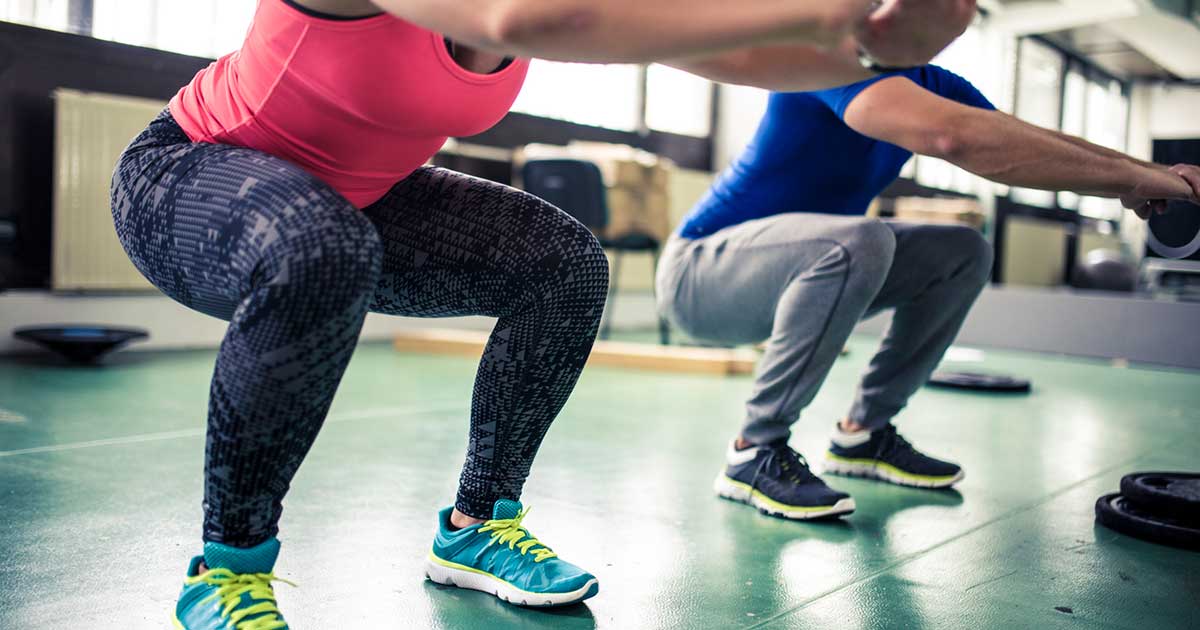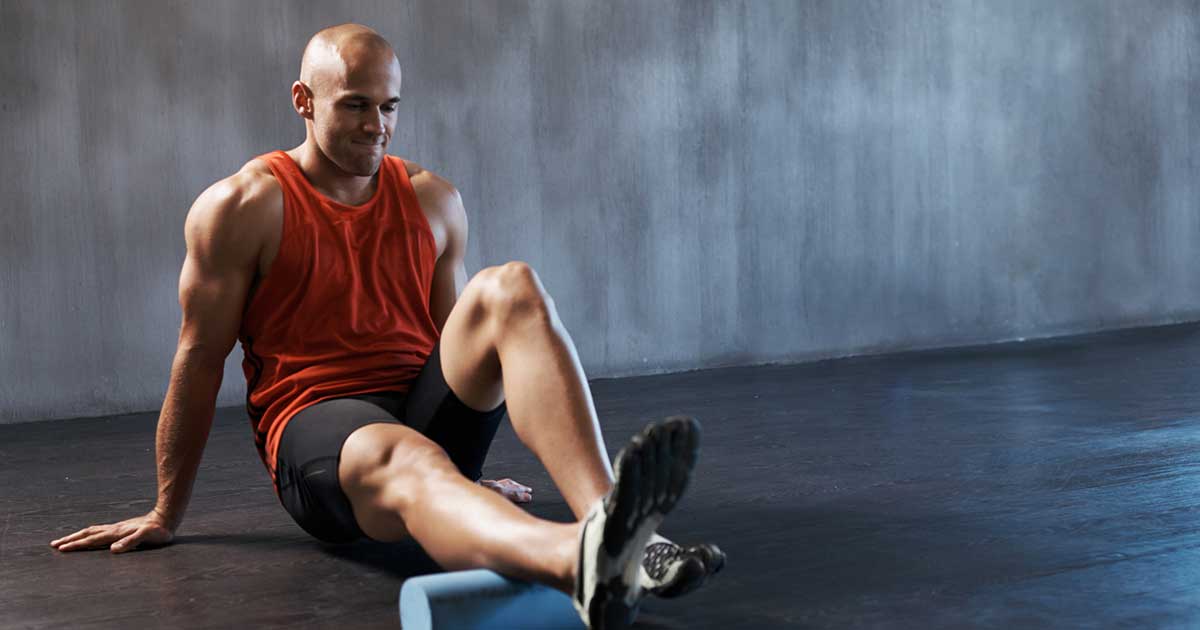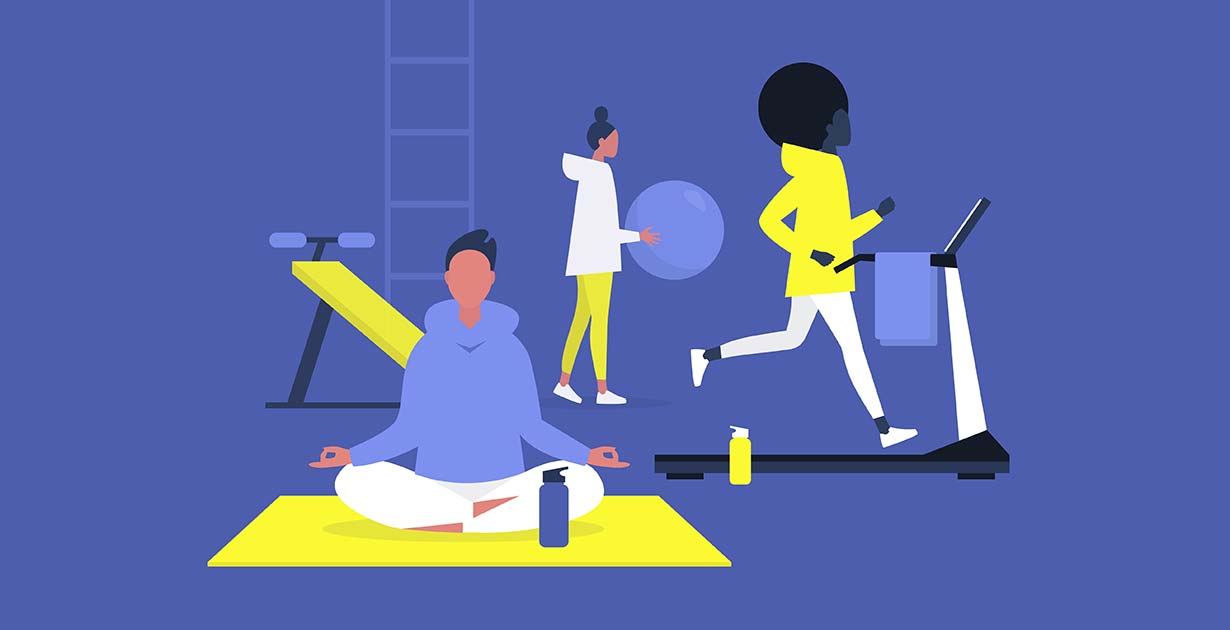Balance and Stability for Runners
Advice to improve your movement, fitness, and overall health from the world's #1 in orthopedics.
You may not have thought of it like this before, but running is a one-legged sport. At any given time, only one foot is in contact with the ground—which makes the ability to maintain your balance and stability extremely important.

“Balance and stability are what keep you from falling and help prevent injury as you propel your body from one leg to the other,” says Michelle Shafiro, PT, DPT, SCS, OCS, CSCS, a physical therapist and sports performance specialist at HSS.
You can think of balance as an even distribution of weight throughout the body. Good balance enables someone to remain upright and steady, Shafiro says. “In runners, poor balance can cause excessive motion from the foot all the way up to the torso. This can put you at risk for either a traumatic injury like rolling your ankle or an overuse injury as your body tries to compensate and control that excessive motion.”
Stability describes your body’s ability to maintain alignment and goes hand in hand with balance, she adds. “One of the common injuries we see when runners lack stability is IT band syndrome,” which affects the iliotibial band along the outside of the leg and causes pain on the outside of the knee. It can also cause patellofemoral pain or “runner’s knee,” which causes pain in the front of the knee.
“Targeting your balance and stability can reduce your risk of injury as a runner and can increase your performance as your body gets more efficient and isn’t expending extra energy controlling excessive motion,” Shafiro says.
How to Improve Balance in Runners
Addressing balance and stability with cross training is crucial in reducing your risk of injury, Shafiro says. There are a few easy ways to work on improving these skills; which one is best for you depends on your starting point. If you’re just beginning to incorporate balance and stability training, start with the first tip and progress from there.
- While brushing your teeth, stand on one foot, switching feet halfway through.
- Incorporate single-leg exercises into your strength-training routine. “This could be as simple as standing on one foot while doing a bicep curl or doing exercises like a single-leg dead lift,” Shafiro says.
- Next, progress your single-leg exercises by standing on an unstable surface like a foam pad or BOSU ball to challenge your balance, she says.
“The important thing to focus on during any of these activities is that you maintain good alignment of your body,” Shafiro says. “That means not leaning your torso over to one side, keeping your hips level and not letting your knee collapse inward.”
How to Improve Stability in Runners
For runners, the root of stability lies in having sufficient core and hip strength. According to Shafiro, incorporating the following exercises into your routine can help increase both of these.
Forearm Planks
- Lie on your stomach with your forearms and elbows under your shoulders.
- Pull your abs in and lighten your glutes.
- Press down through your forearms and toes, lifting your body up so that you form a straight line from shoulders to feet.
- Hold for 30 seconds. Repeat 4 times.
Glute Bridges
- Lie on your back with both knees bent, your feet flat and your arms by your sides.
- Tighten your glutes and abs.
- Lift your hips up until you create a straight line from your shoulders to your knees. Don’t let your hips sink.
- Return your hips to floor. That’s one rep. Do 20 reps.
Band Walks
- Place an exercise band above your knees or ankles. (Placing it above the knees is slightly easier.)
- Stand with your feet hip width apart. Tighten your abs and hinge slightly at your hips.
- Side-step to the right with your right foot, then do the same thing with the left foot.
- Take 10 steps to each side.
- Reverse and do the same thing in the opposite direction, leading with the left foot.
- Do 4 reps.
Clocks
- Place a resistance band around your ankles. Stand with your feet hip-width apart.
- Starting on the right side, step your foot back and tap the floor behind you. Bring your foot back to the starting position, then tap it out to the side. Return to start one more time and tap to the front.
- Repeat the three taps with the left foot. That’s one rep.
- Do 5 reps total on each side. Repeat 3 times.
“As you progress with your strengthening program, you can start to combine balance and strengthening exercises for a more efficient workout,” Shafiro says. “If you aren’t sure where to start or what level is appropriate for you, scheduling an assessment with an exercise physiologist is a good way to determine your baseline and develop a program that’s appropriate for you.”



